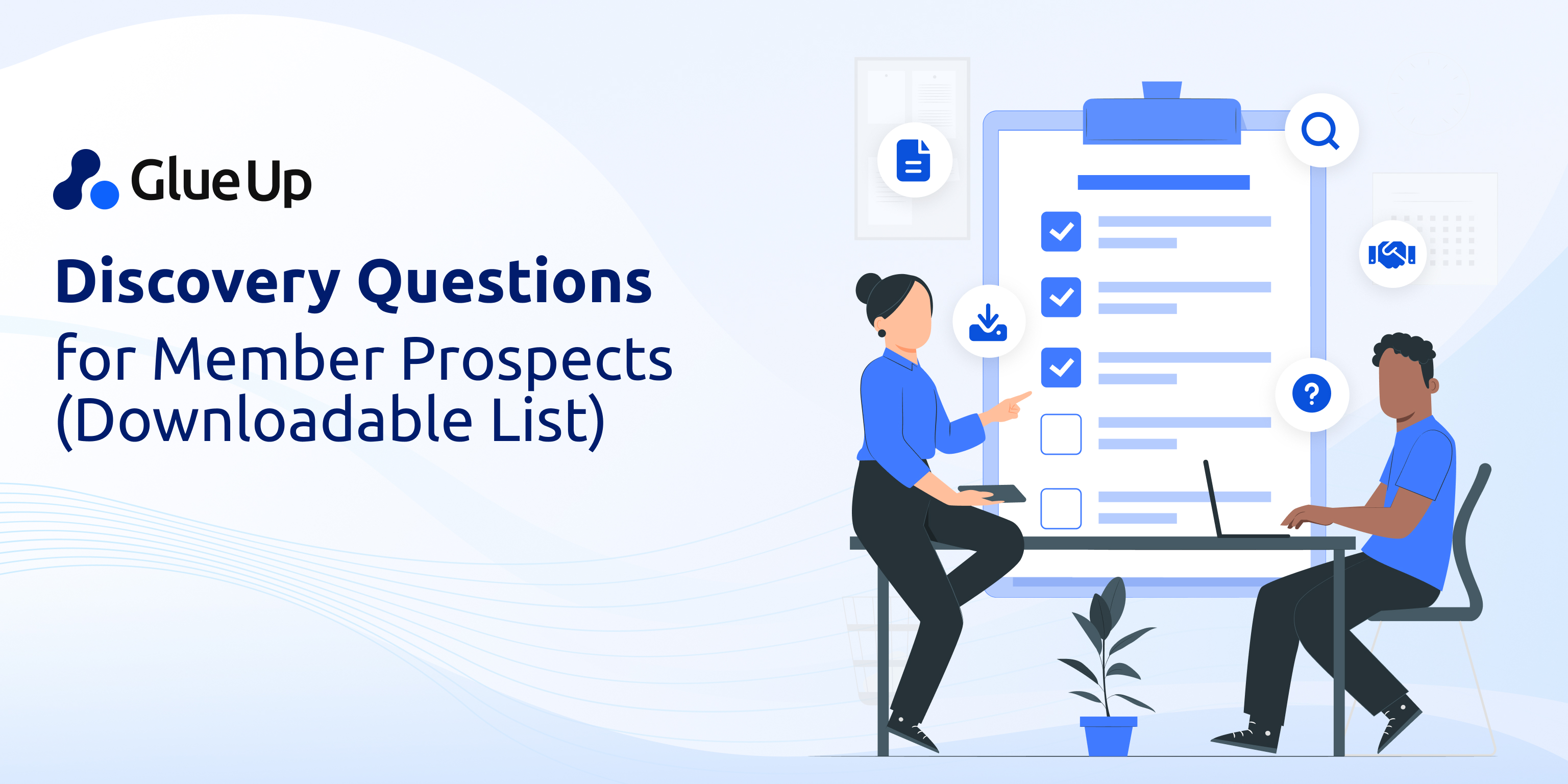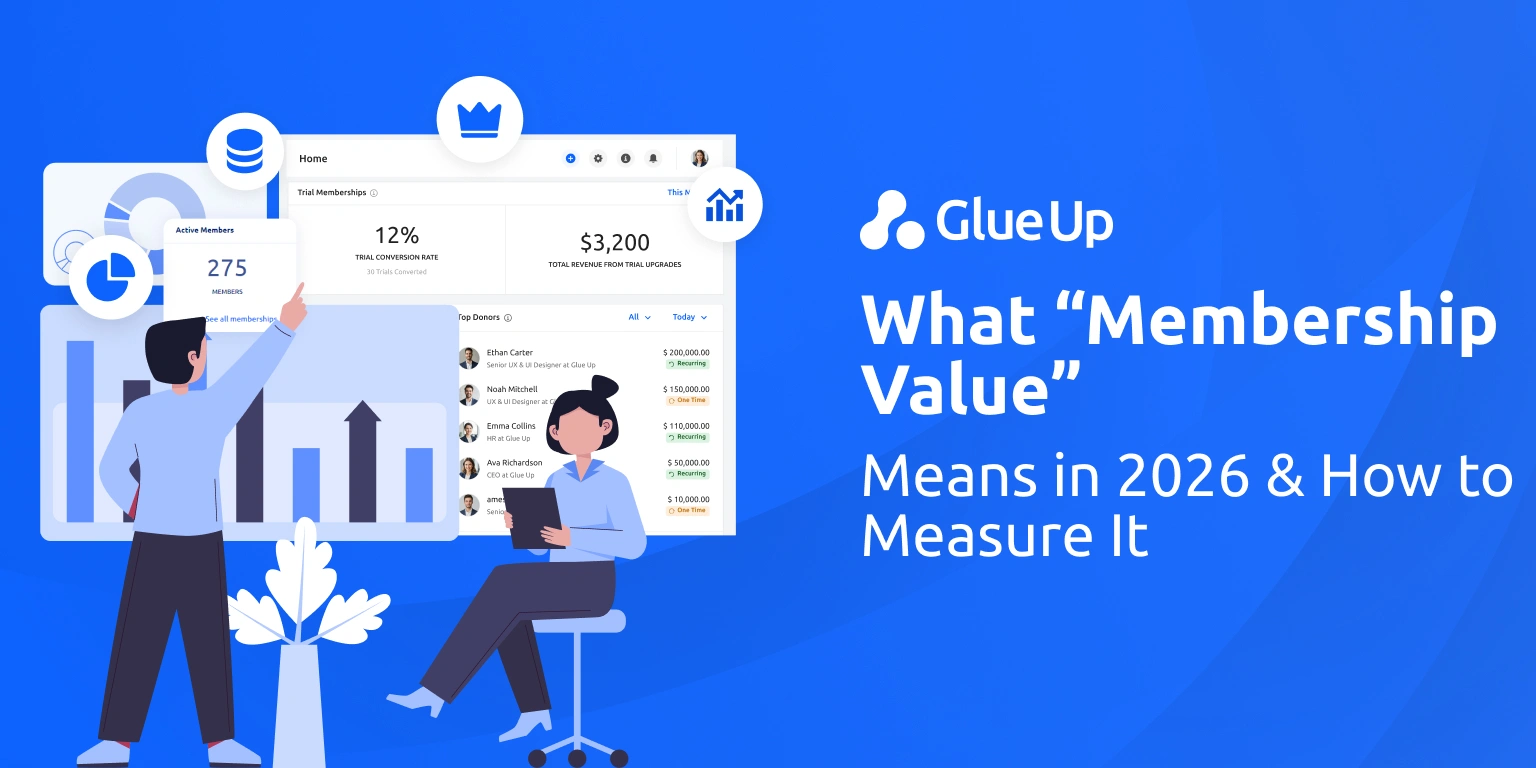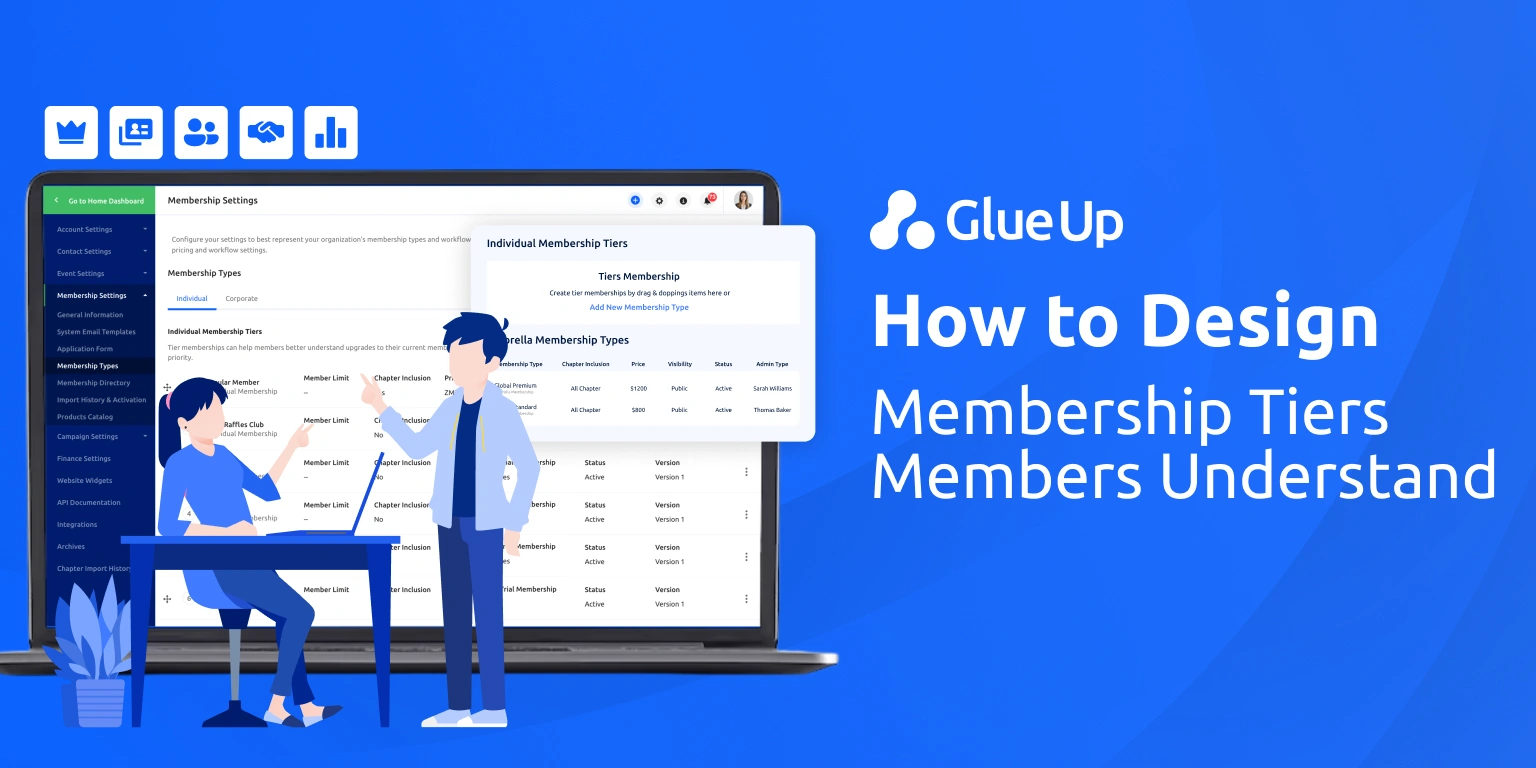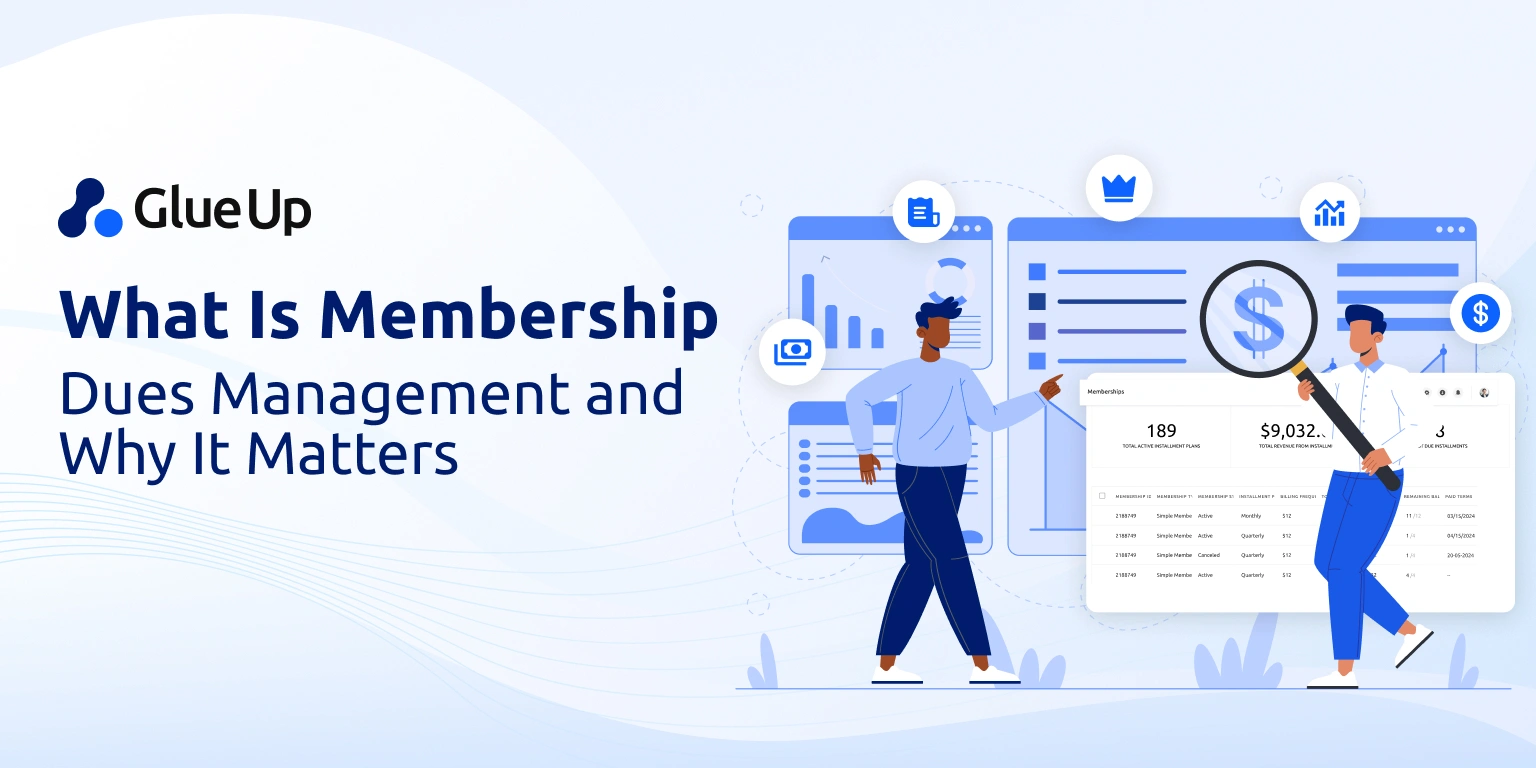
Discovery questions examples are not a script you read into silence. They are prompts that make a real person open up about the progress they want at work, the people they have to convince, and the proof they will need when the budget meeting rolls around. When you work in a member-based organization: an association, a chamber, a professional society, you are not just selling access.
You are helping someone hire a membership to do a job in their career or for their organization. The best conversations feel like a rally. You ask clear, human questions across the call, aim for a healthy talk to listen balance, and capture portable answers your champion can forward to a boss or a board. That is the simple heart of discovery questions examples that actually move people.
Key Takeaways
Instead of asking surface-level questions (“Are you interested in joining?”), associations should focus on probing deeper motivations, why membership matters now, what “success” looks like six months in, and which internal stakeholders influence the decision. This approach shifts the conversation from transactional to consultative.
When prospects articulate their most urgent “job” (e.g., credible training, warm introductions, policy updates, or talent recruitment), membership teams can map their offerings to those jobs. This aligns member onboarding, tier selection, and event invitations to tangible outcomes that feel personalized.
The strongest questions help prospects picture how membership benefits their team, board, or company. By asking about decision-making dynamics, budget cycles, and desired proof of ROI, membership teams set up smoother approvals and stronger renewals later.
By asking “What usually gets in the way of decisions like this?” or “What went wrong in your last association experience?”, associations can anticipate objections around budget timing, approvals, or past disappointments. This allows them to prepare evidence and tailor proposals before objections become barriers.
Each question has a downstream purpose: tagging CRM fields, triggering onboarding checklists, updating renewal scorecards, or feeding upsell campaigns. With Glue Up, these insights don’t just live in call notes, they translate into automated workflows, predictive renewal scores, and measurable retention outcomes.
Quick Reads
Speed Networking Questions for Professional Events • Glue Up
30+ Membership Survey Questions that Increase Over • Glue Up
How to Create an Effective Membership Sales Funnel • Glue Up
Why Discovery Questions Examples Beat Checklists
A checklist is safe. It is also forgettable. Your buyer does not live in your CRM. They live in their calendar, their inbox, and the politics of getting a yes from other people. In complex membership decisions, multiple voices weigh in, and your contact has maybe one or two live conversations to make the case. If your discovery sounds like a form, they will treat it like one. If your discovery sounds like you understand how their work gets done, you turn a call into a working session they want to talk about.
Here is the mental model that never goes out of style. Think of the conversation as tennis. You want short, lively exchanges. You ask a question, you listen, you follow up. You keep it moving. You do not front load ten questions in a row. You do not talk the oxygen out of the room. You do not dump features. You let them tell you what progress would feel like in the next month, the next quarter, the next review cycle. Then you make that progress visible and easy to prove.
This is why the phrase discovery questions examples deserves to live in your playbook. Examples focus attention. They give your team shared language. Most importantly, they turn scattered curiosity into a repeatable experience your members will feel the same way every time: seen, heard, and helped.
Start With Jobs to Be Done Not with Tiers
Members do not buy access. They hire membership to do a job. Sometimes that job is functional, like getting a credential or finding reliable training. Sometimes it is social, like getting warm introductions, building a reputation, or being part of a community that opens doors. Sometimes it is emotional, like feeling confident, supported, or proud of their career path.
When you frame your discovery questions examples around that job to be done, you stop guessing. You stop listing features. You start with progress and work backwards into the tier, the onboarding plan, the next event invite, and the renewal scorecard.
Try this sequence to get out of the feature weeds.
“What nudged you to look at membership this month rather than last quarter”
“When you picture a great outcome from joining, what changes for you or your organization in the next six months”
“Which job matters more this quarter credible training, warm introductions, policy updates, or hiring”
“If we only delivered one outcome in the first thirty days, which one should it be and why”
Notice the tone. There is no jargon. There is no pressure. You are letting them set the success criteria. Once they do, mirror their language. If they say warm introductions will make this worth it, write warm introductions in your recap, not networking opportunities. If they say a credential will help, write the credential by name and put a date next to it.
Map Value Early with Evidence That Travels
Membership is often measured in moments, an event that produced two clients, a credential that unlocked a raise, a warm introduction that led to a partnership, a policy brief that saved an expensive mistake. Your job is to surface the moments your buyer and their stakeholders will recognize as proof. That proof does not have to be dramatic. It has to be easy to repeat.
Use discovery questions examples that reach for the exact evidence your contact will take into an internal thread.
“Which program or event would make you say this pays for itself on paper”
“If you asked your manager for dues support, what would they want to see as a win in the first quarter”
“What fell short in your last association experience that we should avoid repeating here”
“Between speaking opportunities, training credits, and warm introductions, which two would matter most in your performance review”
Every answer here turns into copy you will use later. If they want training credits and a speaking slot, note it in your CRM, put training on the calendar, and introduce them to the programming lead for potential slots. If they want to show a manager that the team met hiring goals faster, tie your member directory, job board, or recruiting roundtables directly to that outcome in your follow up.
Include Stakeholders from the Start
Your contact is rarely the only decider. It is normal to have a half dozen to ten voices in the background. You can either ignore that reality or design for it. Designing for it is smarter, faster, and kinder to your champion. The best discovery questions examples make it easy for a busy professional to bring others along.
Use two simple moves.
“Besides you, who needs to feel good about this and what would each of them want to see work well”
“If you were writing the internal message to recommend this, what three bullets would you include”
The first gives you a list of roles to address: finance, programming, marketing, operations, the board chair. The second gives you a draft of the email they will actually send. You can even offer to write it for them. Keep it brief and portable.
Here is a ready to reuse structure.
One sentence on the job to be done with the exact words they used
Three bullets on how membership will deliver that job in the first quarter
One line on cost, timing, and the next step you already booked
Do not underestimate how helpful this is. You are taking labor off your buyer’s plate and giving them language that will survive the forwarding chain. That is how discovery questions examples become political tools, not just conversation starters.
Surface Friction While Energy Is High
Blocks do not disappear because we ignore them. They grow teeth. If your prospect likes what they hear, give them a calm way to name what could still get in the way. It shows respect for their reality. It gives you room to suggest a small test. It often saves a good fit from dying in committee.
Use this short, direct pair.
“If this stalls even if you like it, what usually gets in the way budget timing, dues rules, approvals, or something else”
“What happened the last time you tried to solve this and what would you want to avoid repeating”
Once you know the block, you can be useful. If budget timing is tight, propose a short trial with guided onboarding, a mid trial check in, and one visible quick win. If approvals are the hazard, send the one page internal note and offer to join a fifteen minute group call to answer questions. If dues rules are the problem, show installment options and how auto renewal settings work with reminders and clear notices.
Friction is not an enemy. It is a roadmap. Your discovery questions examples reveal it early enough to handle without drama.
Keep The Rally with Follow Ups and Breathing Room
The most overlooked skill in discovery is the follow up. Not the big impressive question, but the small, respectful nudge that proves you were listening and invites a little more. Follow ups keep the rally going. Follow ups make you likable. Follow ups turn a generic answer into something specific enough to act on.
Keep these in your pocket.
“Can you say a bit more about that deadline”
“What made that hard last time”
“Who else will care about that result and how will they judge it”
“If that happened, what would you do next”
Pace matters here. Give answers room to land. Let silence do some work. Keep your voice warm and steady. If you notice you are pushing, back up and summarize what you heard. You will feel the call relax again.
This is also where you protect the conversation from becoming a monologue. The target is a healthy talk to listen balance. Think more conversation, less pitch. Think more quick switches, fewer long speeches. Your discovery questions examples create that shape, but your tone keeps it human.
Turn Discovery into a Plan Inside Glue Up
A strong conversation deserves a strong follow through. Everything your prospect tells you should change what you do next and how quickly they feel the value you promised. This is where Glue Up earns its keep for a membership team that wants to look, and be, organized.
Write the job to be done into the record.
Add a field for the job to be done on the opportunity. Keep it in the prospect’s own words. This field travels with the record. It informs the tier you recommend, the onboarding plan you schedule, the community invites you send, and the renewal proof you prepare. When a colleague opens the profile, they should see one clear sentence that explains why this person is joining.
Use consistent stages and exit criteria.
Adopt four core stages that work for membership teams everywhere: prospect, lead, trial if you use trials, Member. Define what it takes to leave each stage. Put the exit criteria in the record so anyone can tell when to move forward. A consistent stage model lets you run reports without caveats. It also lets you coach with data, not hunches.
Design onboarding to deliver a quick win.
Make onboarding a real experience, not a welcome email. Day one welcome and login. Day three setup checklist. Week two short tutorial that matches the job to be done. Week three check in to see what needs a nudge. If the job is training, enroll them in the first course. If the job is visibility, publish a directory profile and offer a speaking date. If the job is pipeline, schedule one or two warm introductions.
Personalize community and communications.
Use interest tags from the call to invite them into the right sub communities. If they prefer digests to a stream of single emails, set the digest and pin their priority topics at the top. If they want policy updates, add the brief to their preferences. The promise you made on the call should be visible in their inbox within a week.
Measure engagement and prepare renewal proof.
Track events attended, logins, community posts, and open invoices. Review these weekly so you can route accounts to light touch nudges, personalized content, or a human call. Build a simple renewal scorecard that shows progress against the job to be done. When renewal season arrives, your success manager can tell a short, honest story with the member’s own milestones.
Feed events back into the funnel quickly.
After every event, follow up within forty-eight hours. Send slides or recordings. Thank members. For non-members, send a membership offer that reflects the session they chose, plus a short booking link for a fit check. Your discovery notes will tell you which angle to use. This is how events become momentum, not just moments.
Align with sponsorship when relevant.
When your prospect represents a company, capture which topics would feel credible for them and what fiscal timing they use. Offer a small test, perhaps a community post and a webinar role, then measure with a simple return template. If it works, the conversation about a year-round sponsor menu will feel natural, not forced.
All of this turns discovery questions examples into a member experience that feels considered, timely, and personal. The promise on the call becomes the plan in the system.
A Practical Flow You Can Use Tomorrow
Here is a clean flow that writers can include in the post and your team can put into practice. It uses the discovery questions examples you have seen, keeps a natural pace, and bakes coaching into the process.
Prep for thirty seconds
Scan the profile, last touch, and any event attendance. Note a likely job to be done and one likely stakeholder.
Open for two minutes
“What prompted you to look at membership now”
“Six months from now, what would make this feel worth it”
Core for ten minutes
Pick eight to ten from jobs, evidence, stakeholders, and friction. Ask follow ups. Keep the rally. Aim for a balanced talk to listen rhythm. If you notice yourself explaining for more than a minute at a time, pause and ask a short question to bring the other person back in.
Calibrate for two minutes
“On a one to ten, how close are we to a fit and what would make it a nine”
“Would a fifteen minute make the most of your membership session with your team help decide”
Close for one minute
Book the working session or the trial. Promise a same day recap. In that recap, repeat the job to be done in their words, the proof they will recognize, and the next step you booked together.
This is the fastest way to make a conversation feel like partnership. It also respects a millennial professional’s reality. They are busy. They want to be listened to. They want action that fits their context. The flow does that without drama.
Discovery Questions Examples for Common Association Scenarios
You will meet similar patterns again and again. Tune your discovery questions examples to each so you can help faster and recommend with confidence.
Young professional focused on credentials
“Which credential would change your work or compensation this year”
“How do you prefer to learn right now live events, on demand video, or short email digests”
Follow through by enrolling them in one course and offering one peer mentor introduction. Show them how to track progress in their portal. This aligns with how newer members define value and reduces the time to first win.
Corporate group weighing value for a team
“Which outcomes would your line managers want faster hiring, shorter onboarding, or role-based training”
“What calendar or budget gates should we respect to make this easy to approve”
Follow through with a one page group plan that shows the first quarter’s sessions, a trainer contact, and reporting. Include a short note for finance on dues and billing options.
Small firm owner chasing pipeline
“What kind of introduction would be a real win two potential clients, a partner, or a mentor”
“Which event formats are most likely to put you in those rooms roundtables, speed networking, or topic clubs”
Follow through with two intros and a calendar of high value sessions. Add a directory placement with a short coach on how to write a profile that gets calls.
Policy team inside a government or enterprise
“What is the one policy area you cannot miss, and who reads your updates internally”
“Do you want weekly briefs or a monthly summary you can forward as is”
Follow through with a digest tuned to their topics and a short distribution checklist they can reuse across departments.
Sponsor curious but cautious
“Which topics would feel credible to associate your brand with and which formats do you prefer”
“If we did a one month test, what is the simplest fair way to judge the outcome leads, sign ups, or meeting sets”
Follow through with a small, clean package and a one page result template. If it works, expand. If it needs adjustment, you both have language and numbers to make that decision together.
These are not exotic. They are everyday. The point is to make everyday decisions easier for the person in front of you. That is the promise of discovery questions examples done right.
Coaching And Measurement Without Making It Weird
Managers and senior staff care about repeatability. Reps care about conversations that feel good and get results. You can have both. Add a simple coaching checklist to every call review, and let your system do the heavy lifting.
Use three numbers and two flags.
Question count in the eleven to fourteen range
Talk to listen near balanced, not dominated by you
Quick back and forth present or absent
Job to be done captured yes or no
Stakeholder named yes or no
That is it. Review weekly. Praise what you want repeated. Share short clips of good follow ups. If someone is talking for long stretches, ask them to bring a notecard with three follow ups and a timer for their own answers. If someone avoids friction questions, pair them with a teammate who asks them naturally and have them trade lines they like.
Keep coaching light and specific. Your goal is not to turn people into different personalities. Your goal is to help professionals sound curious, competent, and calm. That is how discovery questions examples turn into a culture of better conversations.
Make It Easy to Say Yes in Your Recap
The call is not the only moment that matters. The recap is the bridge. Treat it like a product. A well written recap gets forwarded. A messy recap dies in an inbox.
Use this shape.
Subject line with their words for the job to be done
Three bullets on how membership will make that progress visible in the first quarter
The first step you already scheduled with date and time
One line on dues, billing preference, and how auto renewal notices work
A thank you that sounds like you
When you can, add two small links. First, a link to their onboarding checklist so they see motion. Second, a link to your scheduling page in case someone else wants to join a short follow up. Where you place that link matters. Put it near the top of your signature and in the first message, not buried at the bottom. Small details compound.
The recap is where discovery questions examples turn into action your buyer can feel. It is also where your tone proves that the conversation was not a performance. It was the start of a relationship you plan to earn again.
Frequently Asked Questions
How many questions should I ask?
Aim for eleven to fourteen across the call. Spread them. Let the rally breathe. Use follows ups to go deeper without piling on.
What is a good talk to listen ratio?
Think more conversation, less pitch. Keep your talk time from swallowing the call. Quick back and forth beats long monologues.
What if multiple stakeholders are involved?
Ask who needs to be comfortable and what each person cares about. Offer to write the internal message with three bullets they can forward. Expect six to ten voices in the decision.
How do I adapt this for renewals?
Shift your discovery questions examples toward evidence of outcomes since joining and toward next quarter wins. Many non-renewals trace back to low engagement and unclear value, not a lack of features.
Pulling It All Together
If you lead an association, a chamber, or a nonprofit, you know member conversations can feel rushed, political, and oddly fragile. The fix is not pressure. The fix is clarity. Use discovery questions examples that begin with why now and what would make this worth it.
Ask for the job to be done in their words. Ask what proof they will trust. Ask who else matters and what would make them comfortable. Ask what could still get in the way. Then write the plan in plain English and deliver a first win fast.
Inside Glue Up, connect the answers to stages, tasks, invites, scorecards, and renewals. Let your system do the boring parts so your team can do the human parts. Your prospect should feel the shift immediately. Their inbox gets fewer, better messages. Their first month shows progress they can point to. Their recap is easy to forward. Their renewal is a short story about outcomes, not a debate about features.
This is what professional discovery looks like in member-based organizations today. It is simple. It is repeatable. It respects a busy person’s time and attention. It is also the fastest way to hear yes without forcing it. Build your next call on discovery questions examples that are curious, specific, and portable. Keep the rally. Keep the promise. Keep going.



